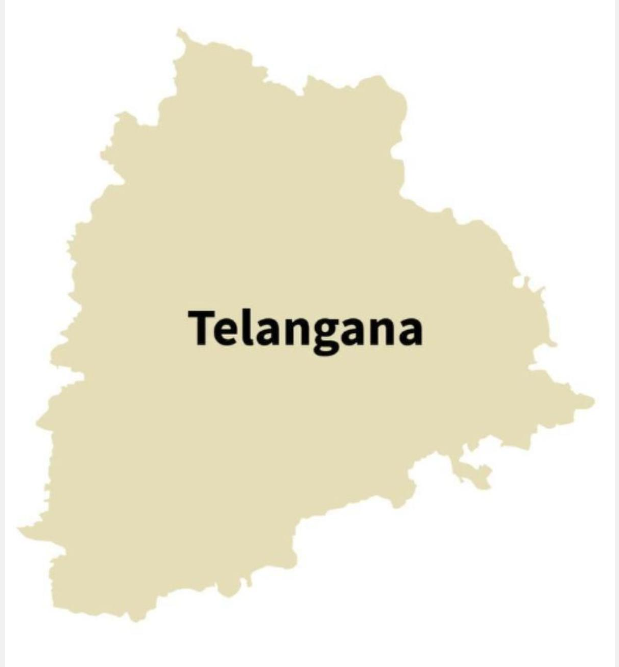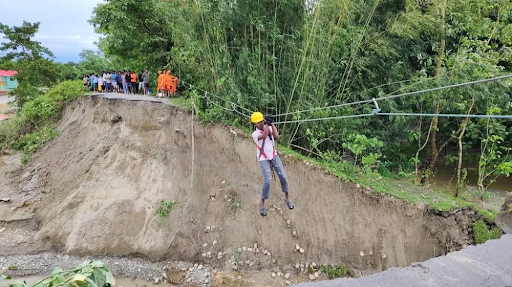Description
.jpg)
Disclaimer: Copyright infringement not intended.
Context:
The Karnataka government has moved the Supreme Court seeking a direction to the Centre to release financial assistance from the National Disaster Response Fund (NDRF) to the state for drought management.
Details
National Disaster Response Fund
- The National Disaster Response Fund is a fund managed by the Central Government and is used for meeting the expenses incurred during emergency relief, disaster response and rehabilitation in the event of a disaster.
- It was earlier called the National Calamity Contingency Fund (NCCF) which had been operated as per the guidelines laid down by the 11th Finance Commission.
- National Calamity Contingency Fund (NCCF) was renamed as National Disaster Response Fund (NDRF) with the enactment of the Disaster Management Act in 2005.
- It is defined in Section 46 of the Disaster Management Act, 2005 (DM Act).
- The NDRF is placed in the “Public Account” of GOI under “reserve funds not bearing interest”.
The purpose of the NDRF
- To extend its support to affected States and Union Territories during severe natural and man-made calamities.
- To supplement the State Disaster Response Fund (SDRF).
- To address the problem of disaster response and management at both state and national level.
- To carry out organisational arrangements such as scheduling, capacity building, monitoring and rehabilitation activities.

Grant Allotted under NDRF
- The Central Government contributes 75% of SDRF allocation for general category States/UTs and 90% for special category States/UTs (NE States, Sikkim, Uttarakhand, Himachal Pradesh, Jammu and Kashmir).
- Generally, the initial relief expenses are borne by the SDRF and the NDRF supplements the States in case of severe calamities.
Scope of Coverage
In case of non-availability of the fund in SDRF, the state should request the Ministry of Home Affairs for the additional assistance under NDRF, and the Ministry provides assistance to the affected states for the following categories:
- To carry out the search and rescue operations in the affected areas.
- To provide relief to the families whose livelihood are severely affected.
- To provide temporary accommodation, food, medical care and other necessities for the affected people who are evacuated and sheltered in the relief camps set up by the Central Rescue Teams.
- To cover the loss of life of people and personnel involved in the rescue operations and cover the loss of any other injuries or disabilities caused during the calamity.
- For airdropping basic supplies in the affected areas.
- To clear all the infected areas by removing the debris in the public places, draining off floodwater and clearing up all the other damages caused during the natural calamities.
- The Ministry of Home Affairs, under the evaluation and request of Ministry of Agriculture, provides assistance to the farmers having lands up to 2 hectares to desilt the debris befallen due to the landslide, avalanche, flood
- The input subsidy is allocated to the farmers to incur the crop losses of 33% and above.
- The assistance is provided to replace the affected milk animals such as cow, buffaloes, camel, sheep and goat and haul animals such as horse, donkey, ox and bullock, and poultries.
- To provide food, water, medicines and other basic amenities for the animals lodged in the relief camps for the cattle.
- A separate assistance is provided to support the fishermen for repairing/replacing their damaged boats, nets and fish seed farms.
- Handicrafts artisans are supported with the relief fund to cover the cost of their damaged goods, tools, raw materials and other finished products.
- The assistance is provided to repair/replace the damaged houses and restore the infrastructure such as roads, bridges, drinking water supply, electric supply, schools, primary health centres and telecommunication services.
Monitoring:
- Department of Agriculture and Cooperation under the Ministry of Agriculture and Farmer Welfare monitors relief activities for calamities associated with drought, hailstorms, pest attacks and cold wave/frost while rest of the natural calamities are monitored by the Ministry of Home Affairs (MHA).
Maintenance of Funds
- The Controller General of Accounts maintains the brief account of the National Disaster Response Fund through the Chief Controller of Accounts, Ministry of Finance.
- The NDRF accounts are audited by the Comptroller and Auditor General every year.
- The State Government should present the copy of the audit report of CAG to the Ministry of Home Affairs and Ministry of Finance on demand.
State Disaster Response Fund
- The State Disaster Response Fund (SDRF), constituted under Section 48 (1) (a) of the Disaster Management Act, 2005, is the primary fund available with State Governments for responses to notified disasters.
- The annual Central contribution is released in two equal installments as per the recommendation of the Finance Commission.
- SDRF shall be used only for meeting the expenditure for providing immediate relief to the victims.
Disaster (s) covered under SDRF:
- Cyclone, drought, earthquake, fire, flood, tsunami, hailstorm, landslide, avalanche, cloudburst, pest attack, frost and cold waves.

Local Disaster:
- A State Government may use up to 10 percent of the funds available under the SDRF for providing immediate relief to the victims of natural disasters that they consider to be ‘disasters’ within the local context in the State and which are not included in the notified list of disasters of the Ministry of Home Affairs subject to the condition that the State Government has listed the State specific natural disasters and notified clear and transparent norms and guidelines for such disasters with the approval of the State Authority, i.e., the State Executive Authority (SEC).
National Disaster Mitigation Fund (NDMF) & State Disaster Mitigation Fund (SDMF)
- 15th Finance Commission, in its report had made recommendations for setting up Mitigation Funds and suggested allocations at National and State level.
- Central Government had constituted the National Disaster Mitigation Fund (NDMF) on 05.02.2021 and also advised all the State Governments to set up State Disaster Mitigation Fund (SDMF) in the State. So far, all the States, except Telangana, have intimated setting up of SDMF.
- For the first time allocation of funds, exclusively for the mitigation of disaster risks, has been made by the Government, both at national and state level. It will help the States in carrying out mitigation activities for reducing the impact of disasters.
- Central Government contributes 75% for all States (90% for North-Eastern and Himalayan States) as Centre share in SDMF.
|
PRACTICE QUESTION
National Disaster Response Fund managed by which of the following?
- Reserve Bank of India.
- Prime minister’s Office.
- Ministry of Home Affairs
- Niti Aayog
Answer C
|




.jpg)
.jpg)







